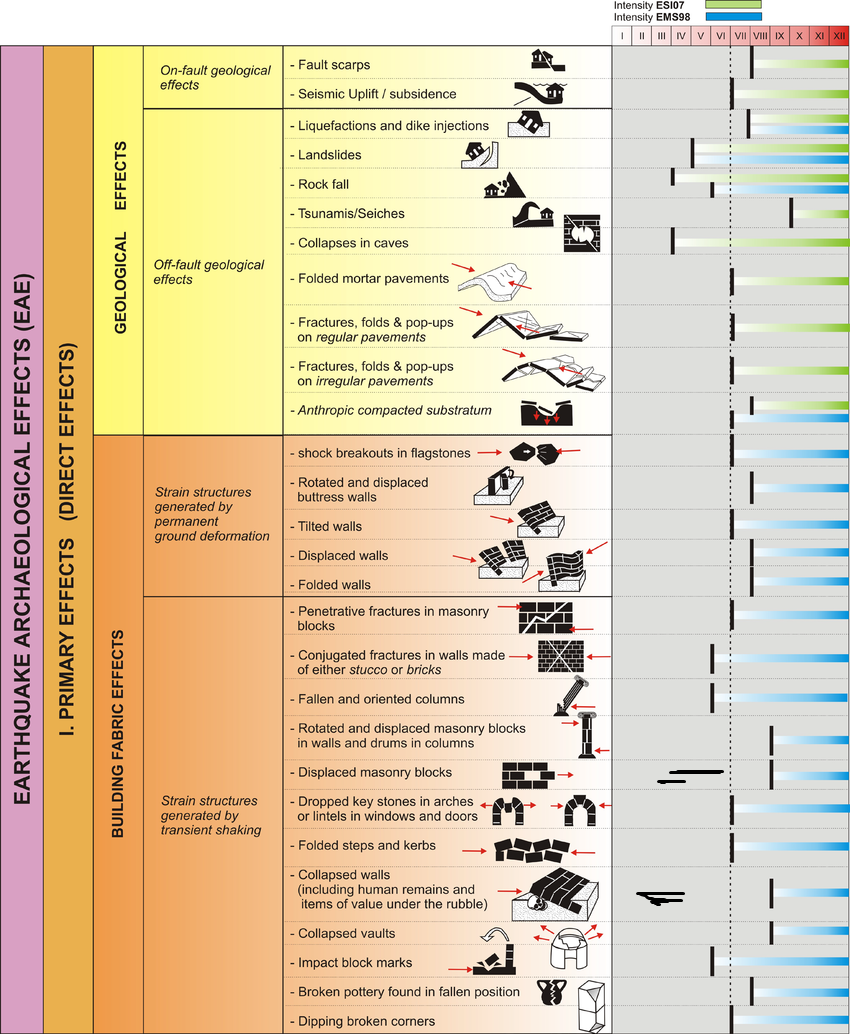Jerusalem - Jason's Tomb
 Jason's Tomb in Rehavia, Jerusalem
Jason's Tomb in Rehavia, JerusalemPhoto by Jefferson Williams taken on 6 April 2023
Jason's Tomb, located west of the Old City, was discovered in 1956 in the Rehavia neighborhood of Jerusalem. Based on finds found inside the tomb, it's initial construction is dated to the beginning of the first century BCE and it's use continued until the 1st century CE until it was sealed in 30/31 CE (Rahmani, 1964:99). Based on charcoal drawings and inscriptions, it is presumed to be the the tomb of a previously unknown personage named Jason. (Stern et al, 1993)
- from Jerusalem - Introduction - click link to open new tab
| Effect | Location | Image | Description |
|---|---|---|---|
| Collapsed Walls | Jason’s Tomb |
|
-
Earthquake Archeological Effects chart
of Rodríguez-Pascua et al (2013: 221-224)

 Earthquake Archeological Effects (EAE)
Earthquake Archeological Effects (EAE)
Rodríguez-Pascua et al (2013: 221-224)
| Effect | Location | Image | Description | Intensity |
|---|---|---|---|---|
| Collapsed Walls | Jason’s Tomb |
|
VIII + |
AVIGAD, N. (1967) “Aramaic Inscriptions in the Tomb of Jason.” Israel Exploration Journal 17, no. 2 (1967): 101–11.
BENOIT, P. (1967) “L’Inscription Grecque Du Tombeau de Jason.” Israel Exploration Journal 17, no. 2 (1967): 112–13.
Dan Barag, 2010, The Tomb of Jason Reconsidered (pp. 145-162)
In Z. Weiss, O. Irshai, J. Magness and S. Schwartz eds.
Follow the Wise: Studies in Jewish History and
Culture in Honor of Lee I. Levine. Winona Lake. Pp. 207–231.
Jason's Tomb: A. Ben-Eli, Sefunim I (1966), 40-42.
- from Wikipedia - click link to open new tab
- download these files into Google Earth on your phone, tablet, or computer
- Google Earth download page
| kmz | Description | Reference |
|---|---|---|
| Right Click to download | Master Jerusalem kmz file | various |